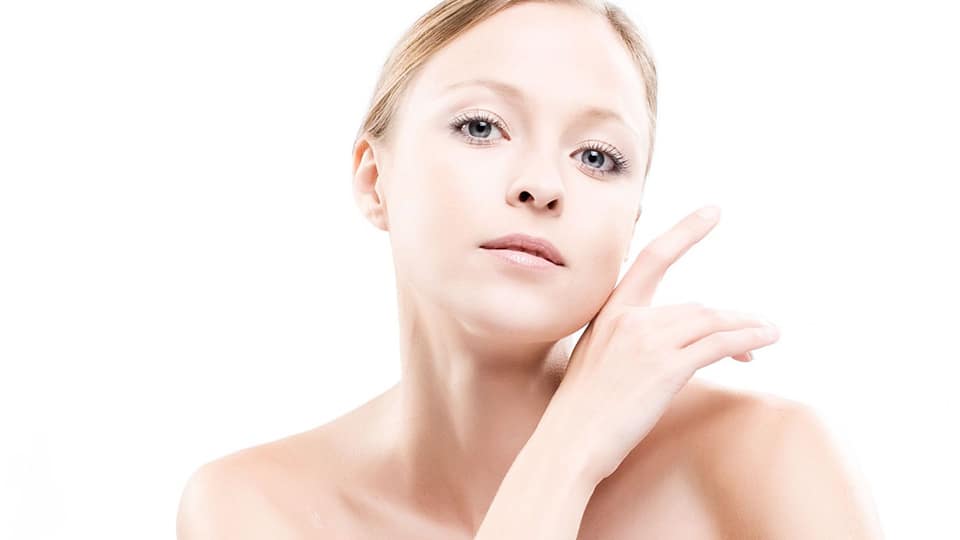Decode Common Whitening Ingredients And Get Tips For Fairer Skin

Having fairer skin has subconsciously become the standard of beauty in this modern era. With a wide range of whitening skincare products that claim to deliver positive results within ‘X’ number of days, how can you be a wise consumer to ensure that a product contains the right ingredients to effect its claims over a period of time?
For most Asian women, a porcelain-like white face is the feminine ideal. They will go to great lengths to avoid the sun – fighting to preserve or enhance their pale complexions with expensive creams, masks, gloves, professional face scrubs and medical procedures. ‘Whitening’ or more accurately skin lightening products are also known as bleaching creams, whiteners and skin brighteners, which work by reducing a pigment called melanin in our skin.
Melanin determines the colour of our hair, eyes and skin. Therefore, people with more melanin will have a darker skin tone. And tyrosinase is a type of enzyme that controls the production rate of melanin. The common uses of lightening products are to treat age spots, acne scars, or discoloration related to hormones.
Let us shed some light on decoding some of the common ingredients in whitening products, and dispenses tips on how we can achieve naturally brighter skin.
Hydroquinone (HQ)
HQ is the agent of choice for skin lightening. Combining HQ with a steroid cream and tretinoin have superior efficacy when compared to HQ alone. Although it’s considered safe, there may be side effects and is subject to pre-market approval by Health Sciences Authority (HSA).
Retinoids
Retinoids have been used topically in the treatment of acne, photoaging and hyperpigmentation. Tretinoin enhances skin turnover by dispersing pigment granules. Combination creams comprising of a steroid, HQ, and tretinoin has been shown to be more efficacious.
4 Easy Tips to Achieving Fairer Skin
1.Hydrate the skin using moisturisers and hydrating creams
2. Gentle exfoliation treatment using various methods (eg AHA, gentle facial scrubs, exfoliation creams like Retin-A, microdermabrasion and chemical peels)
3. Meticulous sun protection – avoid going outdoors during the sunniest period of the day, use umbrellas, hats and protective clothing, and apply sunscreen regularly
4. Adopting a healthy lifestyle – have sufficient sleep, manage stress and eat healthily
Arbutin
It is derived from cranberry, blueberry and bearberry leaves. Arbutin acts by competitively inhibiting tyrosinase and inhibiting melanosome maturation
Azelaic Acid
This naturally occurring dicarboxylic acid is derived from a lipophilic yeast called pityrosporum ovale. It works by inhibiting tyrosinase.
Glycolic Acid
It is an alpha-hydroxy acid (AHA) derived from sugarcane. In low concentrations, glycolic acid produces desquamation of pigmented skin cells. About 30 to 70 per cent of glycolic acid can enhance the penetration of other skin lighteners such as HQ.
Kojic Acid
This hinders tyrosinase and is found in the Aspergillus oryzae fungus. It is used as a skin-lightening agent in concentrations of one to four per cent.
Paper Mulberry Extract
A popular skin-lightening agent used in Europe and South America. It is isolated from the root of the Broussonetia papyrifera tree. It produces little to no skin irritation.
Niacinamide
A form of vitamin B3 that inhibits the transfer of melanosomes to the skin cells. It is also a popular ingredient included in skin-lightening products.
Natural Soybeans
They contain enzymes that reduce melanin transfer, and soy has proven to be both efficacious and safe.
Vitamin
This is popularly included because it interferes with pigment production, which leads to hindering tyrosinase activity. Magnesium L-ascorbic acid 2-phosphate (MAP) is a stable Vitamin C derivative and has shown to lighten pigmentation.
Natural Ingredients
The use of natural ingredients for skin-lightening has gained popularity because ‘natural’ products are often perceived as safer alternatives. Ingredients such as arbutin, azelaic acid, glycolic acid, kojic acid, licorice extract (glabridin), mequinol, paper mulberry, soy, vitamin C, niacinamide, and melatonin are natural agents used to induce hypopigmentation.



